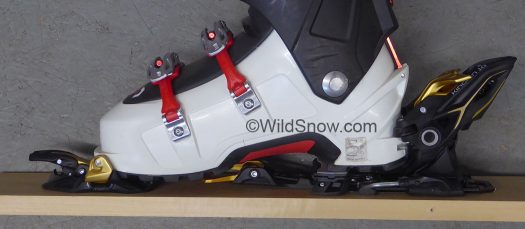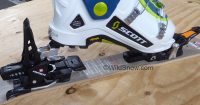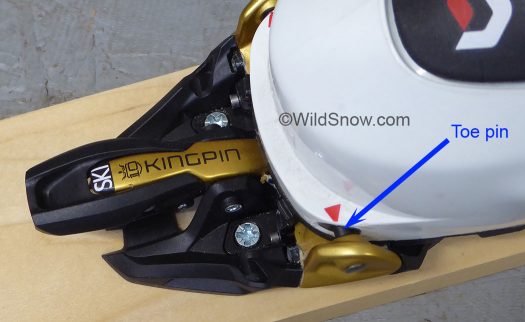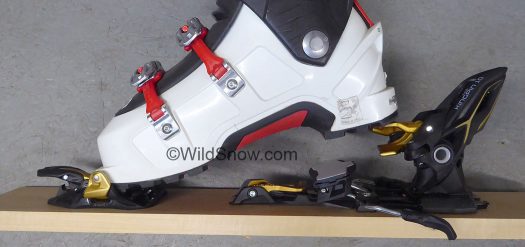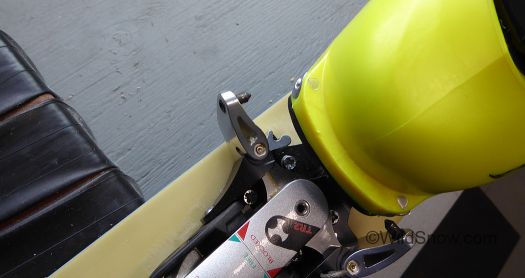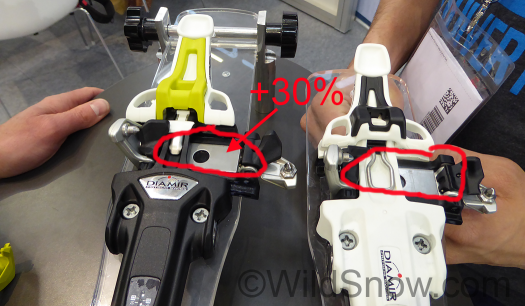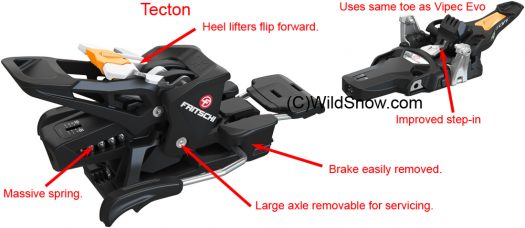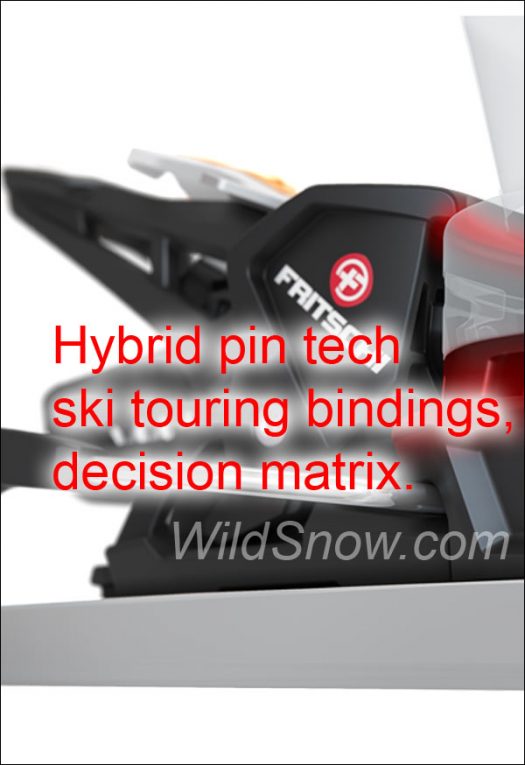(Another post in our mission to help ski touring newcomers figure out the nuances. See Part One here. This post sponsored by our publishing partner Cripple Creek Backcountry. They’re full-service — a good choice if you need TLC for your ski touring shopping dilemmas.)
They’re the hybrid grays of the alien binding world. Promising mysterious benefits, but at the same time emptying your pockets and perhaps asking more questions than they answer. (And yes, sometimes it even feels like you’re being experimented on, especially with first-season products).
We’re talking about ski touring bindings that build on the “classic” tech binding platform. That of connecting binding toe and heel by using the boot shell as a “frame,” but in this case such bindings having heel units that often appear at first glance as a ski resort binding than something for the backcountry.
First, a few terms:
— “Elastic travel” refers to mechanical parts that move with the resistance of a spring. In the case of ski bindings, more travel distance is often better.
— “Accidental release” refers to coming out of a ski binding while on the downhill, unnecessary and unplanned. Often dangerous. Also called “pre-release.”
— “Tech Binding” is defined above.
— “RV” stands for “release-retention value,” is simply the “safety release” numbers printed on most bindings. This is also known as “DIN.”
Your choices, in alpha order:
— Dynafit Beast 14 uses rear pins, but with a mechanically mysterious way of adding more vertical elastic travel. Releases to the side at the heel, with a rotating toe that likely helps prevent accidental release. All versions of this binding are discontinued, but many are still available. A version with RV value 16 was made for a while, it’s quite heavy at 966 grams per binding, probably due to a complex and bulky toe unit, as compared to the model 14. — Fritschi Tecton is new this season. This guy could be the technological equivalent of a NASA Mars Rover, it’s just that cool. Releases to the side at the toe — with radical elastic travel. Plenty of vertical travel at the heel, as well as a tricky hidden system that uses the boot’s rear tech fitting to resist the boot slipping sideways out of the rear binding cup. Uses same toe as Fritschi Vipec “Black.” This will be the Tecton first-season in the wild, unless you’re keen on early adoption it can often be wise to avoid any tech binding in its first consumer season, due to the voluminous history of tech binding defects.
Marker Kingpin boasts more heel upward travel, toe unit is virtually the same as most other tech bindings.
— Trab TR2 is ingeniously simple. Toe wings release to the sides, boot heel is held down by two spring loaded bars that rest on top of the sole “shelf.” Downside is you have to hold the heel open to enter downhill mode. You can get somewhat used to this, but the procedure can remain awkward in tight spots or super deep powder. Most importantly, TR2 requires your boot to have special toe and heel fittings. Latest version is the S4 fitting, sold with some La Sportiva boots, works with both standard tech bindings and TR2.This is where we mention that some of these bindings have what’s known as “TUV Certification” to international standards for ski touring bindings. While such standards are clearly well intentioned (and we make a point of covering them here at WildSnow), in our opinion they’re overly restrictive, incomplete in terms of what they test for, and have odd requirements that can stifle binding design. Our advice at this juncture (2017) is to either entirely ignore or at least mitigate any influence “TUV Certification” has on your shopping decisions. Instead, follow the basics: Don’t buy first-season products; get advice from friends and reputable ski shops; work backwards from your skiing goals to the proper gear; and so on. More about TUV here. Also please see our glossary.
So, the million snowflake question: Why would you choose a hybrid? Indeed, a confusing world out there and the hybrids in our midst make it worse. Self-evaluate your goals. You want a binding that as closely as possible mixes an alpine ski binding and tech touring binding? Hybrid could be a good choice. Or, have you spent 300 hours studying how ski bindings work, and you’ve determined you’d prefer side release at the toe, instead of heel? Perhaps rock a hybrid that does so. Want a binding that’s designed with bias to aggressive downhill skiing? Perhaps a hybrid, though the intense competition to make these things compete in the weight wars can result in bindings less durable than you’d expect.
Then, the two million snowflake question: Why would you NOT choose a hybrid? In weight, some of the heavier classic tech bindings are somewhat equivalent to the hybrids. Difficult choice in that case, perhaps price? Or preferences in how heel lifters and mode (downhill uphill) changes are executed? But drop down to the minimalist tech bindings, likely without brakes, and you get a clear win in terms of lightening your hoof load. Thus, if you’re going human powered and not auditioning for ski movies, a setup with a proven classic can be pure joy. Also consider that the complex hybrids can be more challenging to manipulate (clicking in, switching modes, etc.) and may also be sensitive to icing issues.
Clearly, weight could be a crucial tradeoff for anyone using these bindings with human power. The facts:
| Hybrid Pin Tech Ski Touring Bindings (alpine-like heel, tour with pin system for toe) | ||||
| Binding Model (100 mm brake) | Weight |
Diff in grams/ounces |
Diff in grams/ounces from classic Dynafit Speed Radical 392 gr |
Dif in grams/ounces from Atomic-Salomon classic Backland-MTN 280 gr |
| Dynafit Beast 14 | 852 gr | + 200/7 | + 460/16 | + 572/20 |
| Fritschi Tecton | 678 gr | + 36/1.3 | + 286/10 | + 398/14 |
| Marker Kingpin | 730 gr | + 88/3 | + 338/12 | + 450/16 |
| Trab TR 2 | 583 gr | + 191/7 | + 303/10.7 | |
There you go. After all that, if the alien hybrid bindings are still strange to you, leave a question-comment. You’ll get a response.
Below, more photos of the hybrids.
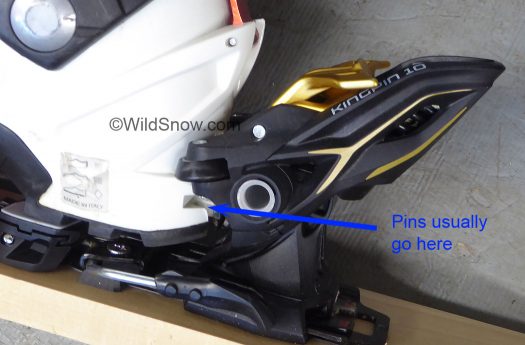
Kingpin heel has vertical travel similar to alpine binding, but it is SIGNIFICANTLY DIFFERENT as it releases to the side at the heel.
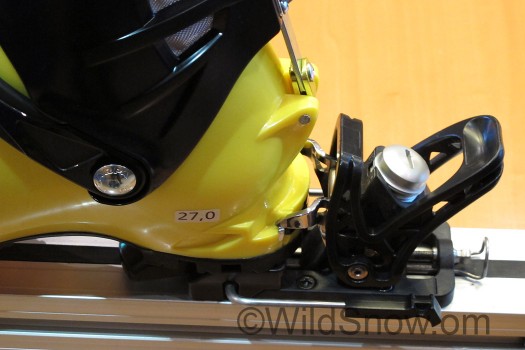
Trab TR2 has super firm heel hold-down due to wider width of jaws as well as no need for binding rotation left-right.
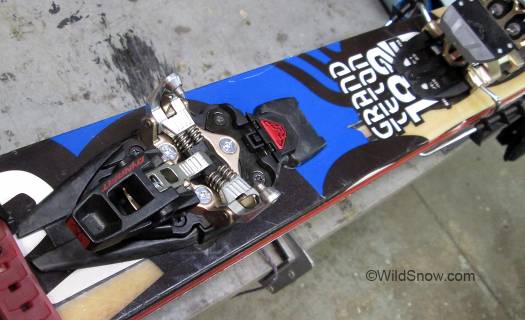
Beast 14 toe rotates 5mm, similar in function to Beast 16 as well as Radical 2.0. A clever part of the lock lever keeps the binding from rotating while it’s open, making it easier to step into.
WildSnow.com publisher emeritus and founder Lou (Louis Dawson) has a 50+ years career in climbing, backcountry skiing and ski mountaineering. He was the first person in history to ski down all 54 Colorado 14,000-foot peaks, has authored numerous books about about backcountry skiing, and has skied from the summit of Denali in Alaska, North America’s highest mountain.

